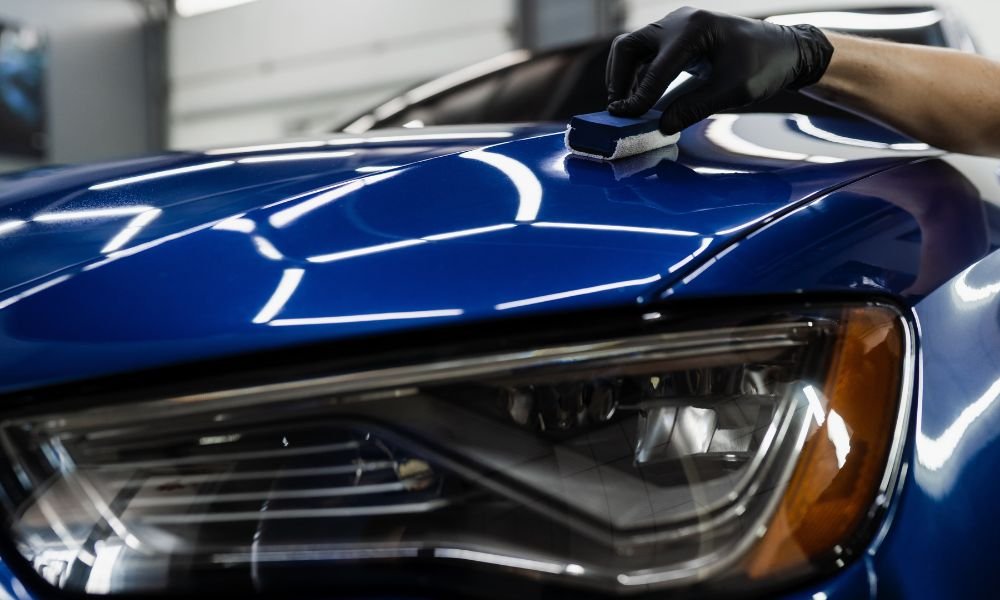Choose high-end paint protection film for a invisible layer of protection.
Choose high-end paint protection film for a invisible layer of protection.
Blog Article
A Comprehensive Overview to the Types of Ceramic Coating on the Market
Ceramic layers have emerged as a crucial service throughout different markets due to their unique buildings and applications. From silica-based solutions known for their effectiveness to hybrid options that merge several benefits, the choices available can be frustrating. Understanding the subtleties of each kind, including their specific benefits and suitable use instances, is important for making informed choices. As we check out the distinctive attributes and applications of these finishes, the effects for performance and longevity come to be progressively obvious, increasing concerns about which type may best suit your demands.
Comprehending Ceramic Coatings
Ceramic coverings are advanced protective solutions that have gotten popularity in different industries, particularly in automotive and aerospace applications. These coatings contain a fluid polymer that, when healed, creates a sturdy, hydrophobic layer externally of the substratum. This layer gives boosted resistance to environmental contaminants, UV radiation, and chemical exposure, therefore prolonging the life and aesthetic charm of the underlying product.
The fundamental part of ceramic layers is silica, which adds to their firmness and longevity. The application process generally entails surface area preparation, application of the finish, and healing, which can be attained with heat or UV light. When cured, ceramic coatings show phenomenal bonding properties, permitting them to stick highly to a variety of surface areas, consisting of metals, plastics, and glass.
Along with their safety functions, ceramic finishes also provide simplicity of upkeep. Their hydrophobic nature lowers the adherence of dirt and gunk, making cleansing simpler and less regular. Generally, the adoption of ceramic coatings stands for a significant improvement in surface area defense technology, giving both practical and visual benefits across numerous industries.
Kinds Of Ceramic Coatings
Different kinds of ceramic coatings are readily available, each created to meet specific efficiency needs and applications - ceramic coating sarasota. One of the most common kinds include:
Silica-based Coatings: These coatings mostly contain silicon dioxide and are known for their resilience and chemical resistance. They are widely utilized in auto and commercial applications.
Titanium Dioxide Coatings: Prominent for their photocatalytic residential or commercial properties, titanium dioxide finishes are often applied in settings where self-cleaning and antifungal homes are desirable, such as in building materials and vehicle coatings.
Zirconia Coatings: Defined by their high-temperature stability and thermal resistance, zirconia coverings are made use of in applications such as wind turbine engines and high-performance automotive parts.
Alumina Coatings: Displaying basics excellent firmness and thermal security, alumina finishes are regularly used in wear-resistant applications, including cutting tools and industrial machinery. - Paint Protection Film
Crossbreed Coatings: Incorporating the buildings of different products, hybrid finishings provide improved efficiency qualities, making them suitable for distinct and requiring applications.
Each type of ceramic layer serves distinct functions, allowing customers to select one of the most suitable option based upon particular ecological conditions and efficiency needs.
Benefits of Ceramic Coatings
Ceramic coverings, in certain, offer many benefits that make them significantly popular among producers and customers alike. These coatings are resistant to scrapes, chemicals, and UV rays, making sure that the underlying surface area stays safeguarded over time.
Along with toughness, ceramic coverings provide outstanding hydrophobic homes, permitting very easy cleansing and maintenance. This water-repellent nature decreases the adherence of dust, crud, and other impurities, which can extend the visual appeal and functionality of the surface. Moreover, ceramic finishes can dramatically improve thermal resistance, making them ideal for applications that withstand heats.

Application Process
When using ceramic coverings, a meticulous method is important to attain optimal results. The application procedure typically starts with thorough surface preparation. This entails washing, sanitizing, and brightening the surface area to eliminate all impurities, including dirt, grease, and prior waxes or sealers. A tidy surface ensures correct bond of the finish.
Once the surface area is prepped, the following action is to use the ceramic covering. The finish ought to be used in slim layers, as thicker applications can lead to unequal finishes.
After application, pop over here the covering calls for a details healing time, generally varying from a couple of hours to a full day, depending on the item. Adhering to these actions carefully will take more full advantage of the effectiveness and longevity of the ceramic layer, providing a resilient protective layer for the surface.
Upkeep and Longevity
To make certain the longevity and performance of a ceramic finishing, normal upkeep is crucial. Ceramic layers, known for their sturdiness and protective qualities, call for certain care regimens to optimize their life-span and efficiency. The initial action in maintenance involves regular cleaning with pH-neutral soap, staying clear of severe chemicals that can degrade the layer. It is recommended to clean the vehicle regularly, preferably every two weeks, to stop the buildup of pollutants that could endanger the covering's honesty.
Along with routine washing, regular assessments are important. Look for signs of wear or damages, such as hydrophobic residential properties diminishing or surface imperfections. If required, a light gloss may be related to revitalize the finishing without removing it away.
Furthermore, the application of a booster spray can enhance the coating's hydrophobic impacts and recover its gloss. This is specifically beneficial for finishings that have actually remained in usage for an extensive duration. Ultimately, by sticking to these maintenance techniques, one can dramatically prolong the life of a ceramic finishing, ensuring that it continues to supply ideal protection against ecological aspects and keep the aesthetic allure of the automobile.
Verdict

Report this page